I booked a rental car from 15th to 17th
April 2023 for various trips away from home to include visits to a number of
sites in Essex, Kent and Suffolk.
This was my first spring birding trip by car away from home to primarily add species to my 2023 UK year list.
My trip provided excellent birding opportunities including 20 additions to my 2023 UK year list taking it to 146 species.
The 20 additions to my 2023 UK year list were as follows: Cattle Egret, Little Ringed Plover, Mediterranean Gull, Sandwich Tern, Common Tern, Cuckoo, Woodlark, Sand Martin, Swallow, Tree Pipit, Yellow Wagtail, Nightingale, Wheatear, Sedge Warbler, Reed Warbler, Dartford Warbler, Common Whitethroat, Great Grey Shrike, Raven, Yellowhammer
In addition, I recorded 4 mammal species (Red Deer, Stoat, Rabbit, Grey Squirrel), 1 amphibian species (Marsh Frog) and 1 butterfly species (Peacock)
I visited the following sites:
Essex: EWT Hanningfield Reservoir, Wat Tyler Country Park, RSPB Bowers Marsh, EWT Abberton Reservoir
Kent: NNR Stodmarsh , KWT Hothfield Heathlands
Suffolk: Westleton Heath NNR, NT Dunwich Heath, RSPB Minsmere
15th April 2023
After picking up my rental car in Chelmsford, I first drove home via EWT Hanningfield Reservoir to hopefully see some newly arrived hirundines over the reservoir. I failed to see any Sand Martins but I did record my first 2 Swallows of the year.
I spent the rest of the day (at least until it rained) at 2 sites very close to home: Wat Tyler Country Park and RSPB Bowers Marsh.
Wat Tyler Country Park is located just to the south of Pitsea in south Essex. The area was inhabited from the Bronze Age onwards and is named after Wat Tyler, the leader of the Peasants' Revolt in 1381, which started in nearby Fobbing before spreading to London. The Peasants' Revolt failed and Wat Tyler was killed but he is remembered as a people's champion against the rich and powerful.
Although it only covers 125 acres, Wat Tyler Country Park includes a huge diversity of habitats and rare and important species, making it a Site of Special Scientific Interest (SSSI) and one of the most important wildlife sites in Essex.
At Wat Tyler Country Park, I saw a Cuckoo flying past the main hide and also heard at least 2 singing male Reed Warblers in the reedbed from the main hide, both new additions to my 2023 UK year list.
The main highlights from my visit were as follows: Cuckoo (1 seen and another of the same bird heard calling), Reed Warbler (at least 2 singing males heard), Cetti’s Warbler (1 singing male seen and at least 7 other singing males heard), Swallow (4), Blackcap (at least 4 singing males heard), Chiffchaff (1 singing male seen and at least 7 other singing males heard), Reed Bunting (1 male), Bearded Tit (1 seen and several others heard calling), Common Buzzard (1), Marsh Harrier (male and female), Teal (c.30), Tufted Duck (9), Common Pochard (2), Mallard (at least 15), Little Egret (1), Cormorant (2), Little Grebe (1 heard calling), Moorhen (2), Coot (4), Greylag Goose (4), Canada Goose (4)
RSPB Bowers Marsh comprises dry and wet grassland, fresh and saline lagoons, intertidal habitat, saltmarsh and arable areas. It is an ancient landscape and the grazing marsh has played a vital role in the lives of people and wildlife for centuries.
RSPB Bowers Marsh is now managed as a reserve comprising of significant wetland and lowland wet and dry grassland habitats and it provides feeding and breeding grounds for important wintering, migratory and breeding waders and wildfowl. This is primarily achieved through hydrological management and appropriate grazing regimes. It also supports a range of important protected species such as Water Voles and reptiles by providing important managed habitats such as ditch networks, meadows and fields of varied structure and floral diversity.
There are 4 miles of nature trails and 3 viewing points at RSPB Bowers Marsh. The trails pass different areas of the reserve such as a saline lagoon, freshwater reservoir/scrapes, wet grassland, hedgerow and reedbed habitats. Scrapes are specifically created close to viewing areas.
At RSPB Bowers Marsh, I saw c.15 Mediterranean Gulls and a singing male Common Whitethroat, both new additions to my 2023 UK year list.
The main highlights from my visit were as follows: Black-tailed Godwit (c.75), Avocet (c.35), Lapwing (c.10), Oystercatcher (6), Gadwall (12), Tufted Duck (c.10), Mallard (6), Teal (4), Shoveler (3), Common Pochard (1), Black-necked Grebe (2), Great Crested Grebe (4), Little Grebe (1 heard calling), Coot (c.50), Mute Swan (8), Canada Goose (c.20), Greylag Goose (c.20), Black-headed Gull (+++++), Mediterranean Gull (c.15), Lesser Black-backed Gull (1), Common Whitethroat (1 singing male), Chiffchaff (2 singing males heard), Cetti’s Warbler (3 singing males heard), Peacock (3)
16th April 2023
Today, I spent my time in Kent, primarily at NNR Stodmarsh but also at KWT Hothfield Heathlands.
NNR Stodmarsh is part of a 1540 acre biological Site of Special Scientific Interest (SSSI) near the village of Stodmarsh which lies north east of Canterbury in Kent. In addition, to the National Nature Reserve, parts of it are a Nature Conservation Review site, a Ramsar internationally important wetland site, a Special Area of Conservation and a Special Protection Area under the EU Directive on the Conservation of Wild Birds.
NNR Stodmarsh covers an area of 620 acres and consists of a number of different habitats that are important for wildlife: a large area of open water, extensive reedbeds, alder woodland and carr and water meadows and rough grazing. It is designated as one of only 35 "spotlight reserves" in England by Natural England in the list of National Nature Reserves in England.
NNR Stodmarsh now forms a central and ecologically important feature in the Kentish Stour Countryside Partnership.
Driving down to the village of Stodmarsh, I saw 2 Bullfinches fly across the road.
At NNR Stodmarsh NNR, I saw a single Cattle Egret, a single Common Tern, a single Yellow Wagtail, a single Wheatear and 4 Sedge Warblers plus a single Raven heard calling, all new additions to my 2023 UK year list. Unfortunately, I failed to see the male Ring Ousel or the male Garganey that had been reported in previous days.
Although it started off very misty making wildlife watching somewhat difficult, the sun eventually broke through and I had an excellent long walk around the reserve.
The main highlights from my visit to NNR Stodmarsh were as follows: Cattle Egret (1), Grey Heron (2), Shoveler (c.20), Teal (c.15), Mallard (8), Gadwall (8), Common Tern (1 seen and another heard calling), Black-tailed Godwit (1), Lapwing (c.50), Mute Swan (7), Greylag Goose (9), Coot (9), Moorhen (6), Cormorant (2), Sedge Warbler ( 4 singing males seen and at least 4 other singing males heard), Reed Warbler (1 singing male heard), Yellow Wagtail (1), Wheatear (1 male), Chiffchaff (7 singing males seen, another bird seen and at least 6 singing males heard), Blackcap (1 male seen and at least 2 singing males heard), Cetti’s Warbler (singing males seen and at least 16 singing males heard), Bearded Tit (3), Reed Bunting (2 males), Skylark (3), Stonechat (1 male), Linnet (2), Great Spotted Woodpecker (1 calling bird heard), Green Woodpecker (1 calling bird heard), Stock Dove (3), Marsh Harrier (2 males and 2 females), Raven (1 heard calling), Grey Squirrel (2), Marsh Frog (c.10)
KWT Hothfield Heathlands is an important reserve near Maidstone containing Kent's last 4 valley bogs and one of its few remaining fragments of open heathland. A series of waymarked paths allow access to this unique site with boardwalks allowing further access to some of the wettest parts of the reserve.
I had never visited this site before and my main reason for doing so was to hopefully see the long-staying wintering Great Grey Shrike.
Lengthy periods of scanning the heath in the area where this bird had been regularly reported failed to produce a sighting. However, just as I was about to leave and return to the car park, another birder gestured to me and pointed in the direction where the Great Grey Shrike had just flown in to perch on the top of a bush. This record was a further addition to my 2023 UK year list and my first UK record since 2015. Wintering Great Grey Shrikes are nothing like as regular during the winter months as they were some years ago.
In addition to the Great Grey Shrike, I saw a single Common Buzzard and a single Kestrel plus heard a singing male Yellowhammer, the last a further addition to my 2023 UK year list
17th April 2023
Today, I visited 3 sites in east Suffolk: NNR Westleton Heath, NT Dunwich Heath, RSPB Minsmere.
I returned home via EWT Abberton Reservoir.
NNR Westleton Heath is part of the best remaining tract of heathland in Suffolk and located just outside the village of Westleton. In medieval times a large area of heath known as the Sandlings (on account of its dry sandy soils) stretched along the Suffolk coast. Today only about 20% of the heathland remains and the rest has been lost to modern farming and forestry. The site is particularly good for heathland and woodland species.
At NNR Westleton Heath, I saw a singing male Nightingale and 3 Woodlarks, both new additions to my 2023 UK year list.
The main highlights from my visit to NNR Westleton Heath were as follows: Nightingale (1 singing male), Woodlark (2 singing males, 1 female and another singing male heard), Chiffchaff (1 singing male seen and at least 5 other singing males heard), Blackcap (1 singing male heard), Yellowhammer (1 singing male), Lesser Redpoll (1), Siskin (c.15), Goldcrest (1 singing male heard), Green Woodpecker (1), Mediterranean Gull (c.10 flew over)
The Woodlarks were particularly easy to locate compared with visits in previous years and I was able to get several photos of singing males and a female as soon as I got out of my car.
Photo: female Woodlark
Photo: male Woodlark
Photo: male Woodlark
Photo: male Woodlark
Photo: male Woodlark
Photo: male Woodlark
Photo: male Woodlark
Photo: male Woodlark
Photo: Westleton NNR
Photo: Westleton NNR
NT Dunwich Heath, is an area of coastal lowland heath just south of the village of Dunwich. It is adjacent to RSPB Minsmere and it lies within the area of the Minsmere-Walberswick Heaths and Marshes Site of Special Scientific Interest. It is also designated as a Special Area of Conservation and a Special Protection Area. It has been owned by the National Trust since 1968. Like NNR Westleton Heath, it is part of the best remaining tract of heathland in Suffolk and is particularly good for heathland and woodland species.
At NT Dunwich Heath, I saw 5 Dartford Warblers and a single Tree Pipit, both new additions to my 2023 UK year list.
The main highlights from my visit to NT Dunwich Heath were as follows: Dartford Warbler (1 pair, 2 males and a female seen and 1 male heard singing), Tree Pipit (1), Nightingale (1 singing male heard), Chiffchaff (2 singing males seen, 4 other singing males heard and another bird heard calling), Stonechat (2 pairs), Linnet (2), Skylark (3), Goldcrest (1 seen and another bird heard calling), Green Woodpecker (1 heard calling), Shelduck (4 seen flying over), Red Deer (11), Rabbit (4), Grey Squirrel (2)
Dartford Warblers were easy to locate by the male's song and/or birds perching prominently on top of gorse or heather bushes. Photographs were somewhat more difficult due to the distances from the birds and the direction of the bright sunlight. However, I did manage to get a few cropped record shots.
A small group of Red Deer were also present during my visit, enabling a few photos before they nervously ran off.
Photo: Dartford Warbler
RSPB Minsmere is one of the oldest reserves owned and managed by the RSPB and it is designated as a Site of Special Scientific Interest, a Special Area of Conservation, a Special Protection Area and a Ramsar site. It is also 1 of only 5 European Council Diploma Protected Areas in the UK. Habitats at RSPB Minsmere include reedbeds, marshland, scrapes, grassland, heathland and shingle beach and a huge number and diversity of species is present at any time of the year.
At RSPB Minsmere, I saw c.100 Sand Martins and c.100 Sandwich Terns, both new additions to my 2023 UK year list. However, as at NNR Stodmarsh, I unfortunately failed to see the male Garganey that had been reported in previous days.
The main highlights from my visit were as follows: Bittern (1 “booming” male heard), Shelduck (++), Teal (++), Shoveler (++), Gadwall (c. 20), Mallard (c.20), Wigeon (4), Pintail (2), Avocet (c.200), Oystercatcher (c.20), Common Redshank (6), Lapwing (4), Ringed Plover (3), Turnstone (2), Sandwich Tern (c.100), Common Tern (1), Mediterranean Gull (7), Black-headed Gull (++++), Herring Gull (+), Lesser Black-backed Gull (c.10), Common Gull (1), Barnacle Goose (c.20), Canada Goose (c.10), Greylag Goose (c.10), Mute Swan (2), Moorhen (2), Coot (4), Sand Martin (c.100), Chiffchaff (2 singing males seen and at least 2 other singing males heard), Blackcap (1 singing male heard), Sedge Warbler (2 singing males heard), Cetti’s Warbler (1 seen and at least 4 other singing males heard), Bearded Tit (1 heard calling), Stonechat (female), Common Buzzard (1), Marsh Harrier (male and female), Stoat 1
RSPB Minsmere is a superb site for birds but I have always found it difficult to get many photos here due to the distance from the hides to the birds, However, I did get a few photos during this visit, especially of the Sandwich Terns.
Photo: Common Redshank
I had a very brief stop at EWT Abberton Reservoir on the way home, primarily to see the Little Ringed Plovers that have now returned for the summer to hopefully breed again.
I was successful, seeing a pair of Little Ringed Plovers on the shingle area at the end of one of the causeways, this being my final addition to my 2023 UK year list for this trip.
In addition to the Little Ringed Plovers, I also heard a singing male Nightingale and a singing male Common Whitethroat plus I saw 2 Chiffchaffs, all adjacent to the access road to the visitor centre. In addition, I saw c.20 Common Terns over the reservoir.
Photo: Little Ringed Plover




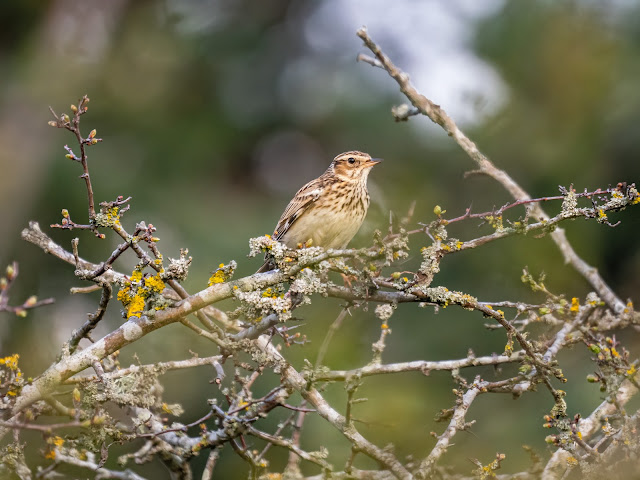




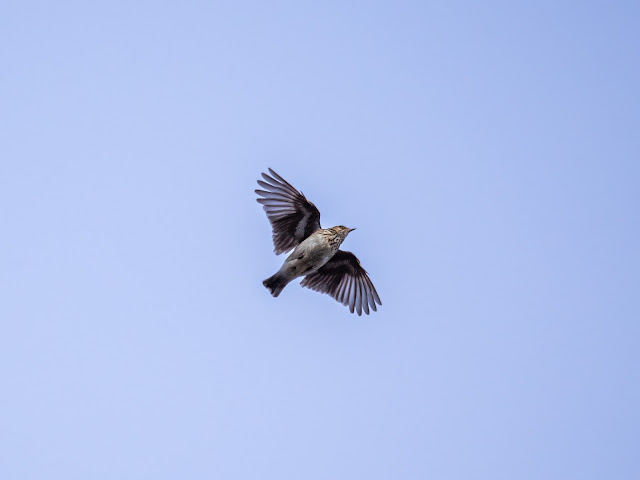

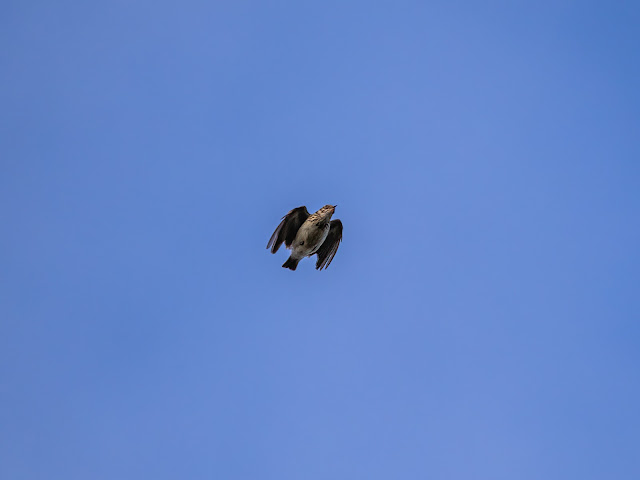










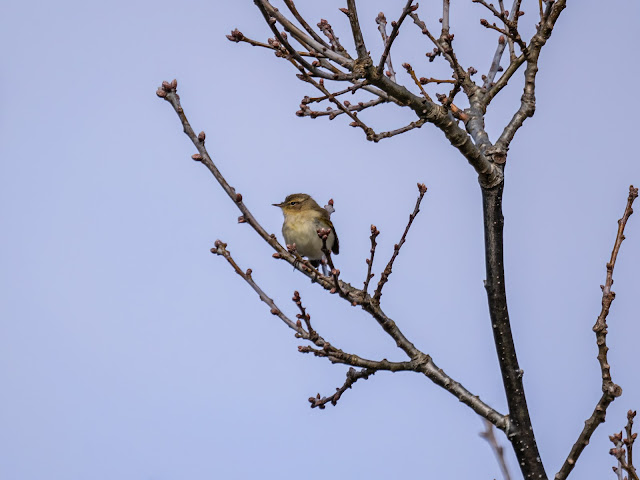





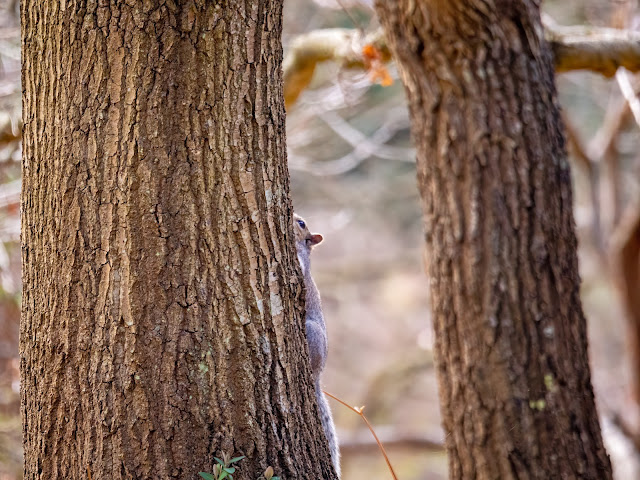


















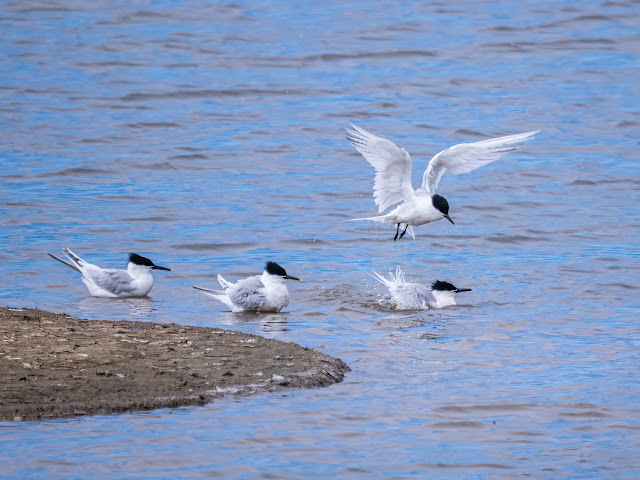






No comments:
Post a Comment
If you feel like commenting on my blog, you can contact me by completing the comment form below. I will respond to all comments and enquiries and constructive criticism will always be welcomed.